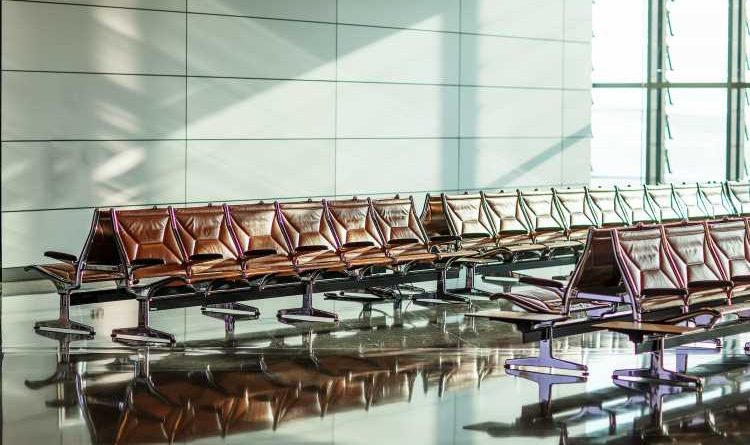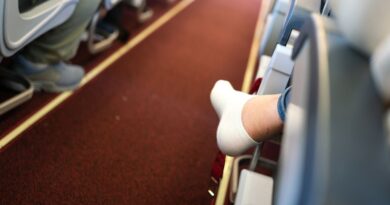We Know We Traveled Less in 2020. But How Much Less?
© Photo by Shutterstock
We Know We Traveled Less in 2020. But How Much Less?
Photo by Shutterstock Was 2020 better or worse for air travel than you imagined?
Load Error
Total international air arrivals into the United States dropped by more than half in 2020, compared to 2019, according to a year in review report released by the U.S. Customs and Border Protection (CBP) on February 4.
CBP processed just over 62.1 million travelers at the country’s airports in 2020, or 54.2 percent fewer than one year prior. The agency processed nearly 238 million travelers at all ports of entry into the United States in 2020, representing a 42 percent drop compared to 2019.
Those declines come after a decade during which international travel increased more than 16 percent, according to CBP. And they’re unsurprising given that not only have international travelers had the concerns of a pandemic to contend with, but since mid-March 2020 the U.S. also has been off limits to foreign nationals traveling from the European Schengen area, the United Kingdom, Ireland, Brazil, China, and Iran. (In January 2021, the COVID-19 ban on travel to the U.S. was expanded by the Biden administration to include South Africa as well.)
While the drop in international arrivals was big, the drop in overall air travel in the U.S. was even bigger. Between January 1 and December 31, 2020, the Transportation Security Administration (TSA) screened a total of about 324 million passengers, or 39 percent of the 824 million total passengers TSA screened in 2019. But the agency and other industry observers believe the biggest drops in travel are likely behind us.
“TSA anticipates daily travel volumes will continue to rise steadily. However, the agency expects volume will remain well below pre-pandemic levels through most of 2021,” the agency stated in a January 4 release.
On March 17, 2020, the number of air travelers began declining rapidly due to the pandemic and bottomed out on April 14, 2020, when just over 87,000 passengers passed through TSA checkpoints—a mere 4 percent of the 2.2 million who traveled on April 14, 2019. The numbers gradually climbed from there, reaching a (worrisome for public health officials) crescendo over the holidays, when coronavirus cases were also spiking nationwide. Between Thanksgiving and New Year’s Eve, passenger averages fluctuated between 24 percent and a high of 61 percent compared to 2019 travel volume during the same period, TSA reported.
In a February 1 report from U.K.-based air travel data firm OAG, the numbers worldwide for early 2021 air travel appear to be an extension of the challenges endured in 2020. That’s not too shocking given that we’ve seen some international travel restrictions become even more stringent at the start of the year, including travel to the U.S. and Canada. Global air capacity for the first quarter of the year is currently at 782.2 million seats compared to 1.258 billion in 2020, OAG reports.
“We all expected 2021 to be a year of two halves but I’m not sure anyone expected the first month of the year to bring such a bad start,” OAG analyst John Grant writes in the report. “Hopefully February will begin to see some hope for us all [after] January continued to offer more punches to an industry already on its knees. Things will get better,” Grant assures. “It’s just when.”
For its part, TSA reports that it has prepared for a safe increase in passenger volumes as the numbers in air travelers continue to inch up. The agency has added nearly 7,000 acrylic barriers at 384 U.S. airports and is implementing additional technology such as ID scanning devices to help reduce touchpoints.
As per a new CDC order, everyone is now required to wear a mask while in all transportation hubs and on public modes of transportation in the United States, including in airports and on airplanes.
The new mask order went into effect on February 2 and remains in effect until further notice. It makes official a mask mandate that was signed by President Joe Biden on January 21, marking the first time the federal government has established an official directive on mask wearing during the coronavirus pandemic.
Masks must be worn over the mouth and nose, according to the CDC order. For those wearing cloth masks, the masks “should be made with two or more layers of a breathable fabric that is tightly woven (i.e., fabrics that do not let light pass through when held up to a light source)”—that goes for gaiters, too, which should have two layers of fabric or be folded into two layers, according to the agency. Medical masks, such as surgical or N95 respirator masks, also pass muster.
>> Next: The COVID Vaccine Travel Booking Spree Is On
Source: Read Full Article





